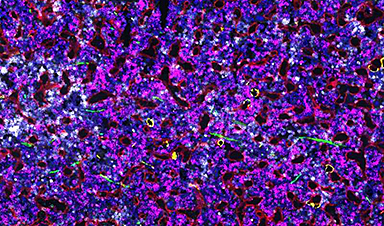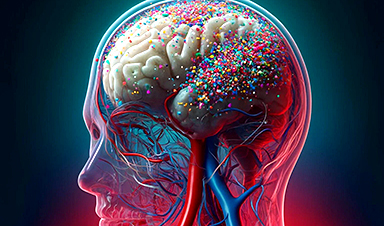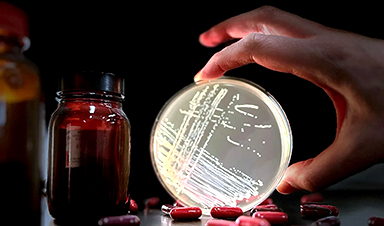Engineered nanomaterials (ENMs) have found their applications in various technologies and consumer products. Manipulating chemicals at the nanoscale range introduces unique characteristics to these materials and makes them desirable for technological applications.
With the increasing production of ENMs, there have been adverse effects on the environment. Moreover, it is unfeasible to estimate the risks caused by ENMs each time via in vivo or in vitro experiments. To this end, in silico methods can come to the rescue to perform such evaluations.
In an article published in the journal Chemosphere, the performance of different machine learning algorithms was investigated for predicting well-defined in vivo toxicity endpoint and to identify the important features involved with in vivo nanotoxicity of Daphnia magna.
The results revealed comparable performances of all algorithms and the predictive performance exceeded approximately 0.7 for all metrices evaluated. Furthermore, artificial neural network, random forest, and k-nearest neighbor models showed a marginally better performance compared to the other algorithm models.
The variable importance analysis performed to understand the significance of input variables revealed that physicochemical properties and molecular descriptors were important within most models. On the other hand, properties related to exposure conditions gave conflicting results. Thus, the machine learning models helped generate in vivo endpoints, even with smaller datasets, demonstrating their reliability and robustness.
Role of Machine Learning in Nanotechnology
Nanotechnology has emerged as a key technology with implications agriculture, medicine, and food industries. Thus, ENMs are more appealing than their larger counterparts due to their outstanding features owing to their smaller size.
Despite their advantages, ENMs have also caused effects on the environment, impacting the health and safety of the environment, calling for environmental risk assessment associated with ENMs. However, this assessment via in vivo or in vitro testing for all fabricated nanoforms is impractical.
The challenge in risk assessment is not only due to extensive ENM production and applications but also due to the large diversity of materials. To this end, chemical modification at the nanoscale range may modulate the physicochemical properties and consequential toxicity profile of the materials.
Recent advances in machine learning offered new tools to extract new insights from large data sets and to acquire small data sets more effectively. Researchers in nanotechnology use machine learning tools to tackle challenges in many fields. Due to their compatibility with complex interactions, machine learning can help predict the toxicological effects of ENMs through large data sets.
The field of nanotoxicology lacks standardized procedures to depict common ontologies to measure ENM properties. However, the models from limited datasets can help generate the key nanotoxicological descriptors. The nanotoxicological models based on machine learning developed to date focused on endpoints like viability or cytotoxicity.
In Silico Machine Learning Tools for The Prediction of Daphnia Magna Nanotoxicity
Despite considerable efforts, various obstacles still exist for in silico modeling of nanotoxicological effects due to limited data availability and poor data curation. Hence, better agreement on data quality, experimental protocols, and availability are vital to acquiring homogenous data across different studies.
In the present work, the performance of machine learning algorithms for predicting in vivo nanotoxicity of metallic ENMs towards Daphnia magna was investigated. Various models were generated based on the sources obtained from immobilization data, which were in congruence with the principles of organization for economic co-operation and development (OECD). Furthermore, the limitations in obtaining consistent data for modeling were overcome by applying different methods of data curation.
Among the six machine learning models generated based on OECD, neural network, random forest, and k-nearest neighbor algorithms showed the highest performance, while the other models showed relatively similar performance. This indicates that machine learning is more suitable for in silico modeling of in vivo nanotoxicity than the actual algorithm. Additionally, key descriptors that modulated the toxicity of metallic ENMs towards Daphnia magna were also studied based on the generated machine learning models.
Conclusion
To summarize, machine learning algorithms were performed to predict the in vivo nanotoxicity of metallic ENMs. The collected Daphnia magna toxicity data for metallic ENMs were analyzed using six classification machine learning models based on the principles of OECD.
The results revealed that artificial neural networks, random forest, and k-nearest neighbor algorithms had the highest performances, which were in line with previous reports from the literature. On the other hand, the relative differences in other algorithm models were comparatively small. These results proved the compatibility of machine learning for in silico modeling of in vivo nanotoxicity.
Furthermore, feature importance analysis using machine learning algorithms revealed contradictory results in all the models, with physicochemical properties and molecular descriptors being significant features within models. The results demonstrated that the models with small datasets with few physicochemical properties and molecular descriptors result in machine learning models with good predictive performance.
News
Scientists Invent Plastic That Can Dissolve In Seawater In Just A Few Hours
Plastic waste and pollution in the sea have been among the most serious environmental problems for decades, causing immense damage to marine life and ecosystems. However, a breakthrough discovery may offer a game-changing solution. [...]
Muscles from the 3D printer
Swiss researchers have developed a method for printing artificial muscles out of silicone. In the future, these could be used on both humans and robots. Swiss researchers have succeeded in printing artificial muscles out [...]
Beneficial genetic changes observed in regular blood donors
Researchers at the Francis Crick Institute have identified genetic changes in blood stem cells from frequent blood donors that support the production of new, non-cancerous cells. Understanding the differences in the mutations that accumulate [...]
Shocking Amounts of Microplastics in the Brain – It Could Be Increasing Our Risk of Dementia
The brain has higher concentrations of plastic particles compared to other organs, with increased levels found in dementia patients. In a comprehensive commentary published in Brain Medicine, researchers highlight alarming new evidence of microplastic accumulation [...]
Baffling Scientists for Centuries: New Study Unravels Mystery of Static Electricity
ISTA physicists demonstrate that contact electrification depends on the contact history of materials. For centuries, static electricity has intrigued and perplexed scientists. Now, researchers from the Waitukaitis group at the Institute of Science and [...]
Tumor “Stickiness” – Scientists Develop Potential New Way To Predict Cancer’s Spread
UC San Diego researchers have developed a device that predicts breast cancer aggressiveness by measuring tumor cell adhesion. Weakly adherent cells indicate a higher risk of metastasis, especially in early-stage DCIS. This innovation could [...]
Scientists Just Watched Atoms Move for the First Time Using AI
Scientists have developed a groundbreaking AI-driven technique that reveals the hidden movements of nanoparticles, essential in materials science, pharmaceuticals, and electronics. By integrating artificial intelligence with electron microscopy, researchers can now visualize atomic-level changes that were [...]
Scientists Sound Alarm: “Safe” Antibiotic Has Led to an Almost Untreatable Superbug
A recent study reveals that an antibiotic used for liver disease patients may increase their risk of contracting a dangerous superbug. An international team of researchers has discovered that rifaximin, a commonly prescribed antibiotic [...]
Scientists Discover Natural Compound That Stops Cancer Progression
A discovery led by OHSU was made possible by years of study conducted by University of Portland undergraduates. Scientists have discovered a natural compound that can halt a key process involved in the progression [...]
Scientists Just Discovered an RNA That Repairs DNA Damage – And It’s a Game-Changer
Our DNA is constantly under threat — from cell division errors to external factors like sunlight and smoking. Fortunately, cells have intricate repair mechanisms to counteract this damage. Scientists have uncovered a surprising role played by [...]
What Scientists Just Discovered About COVID-19’s Hidden Death Toll
COVID-19 didn’t just claim lives directly—it reshaped mortality patterns worldwide. A major international study found that life expectancy plummeted across most of the 24 analyzed countries, with additional deaths from cardiovascular disease, substance abuse, and mental [...]
Self-Propelled Nanoparticles Improve Immunotherapy for Non-Invasive Bladder Cancer
A study led by Pohang University of Science and Technology (POSTECH) and the Institute for Bioengineering of Catalonia (IBEC) in South Korea details the creation of urea-powered nanomotors that enhance immunotherapy for bladder cancer. The nanomotors [...]
Scientists Develop New System That Produces Drinking Water From Thin Air
UT Austin researchers have developed a biodegradable, biomass-based hydrogel that efficiently extracts drinkable water from the air, offering a scalable, sustainable solution for water access in off-grid communities, emergency relief, and agriculture. Discarded food [...]
AI Unveils Hidden Nanoparticles – A Breakthrough in Early Disease Detection
Deep Nanometry (DNM) is an innovative technique combining high-speed optical detection with AI-driven noise reduction, allowing researchers to find rare nanoparticles like extracellular vesicles (EVs). Since EVs play a role in disease detection, DNM [...]
Inhalable nanoparticles could help treat chronic lung disease
Nanoparticles designed to release antibiotics deep inside the lungs reduced inflammation and improved lung function in mice with symptoms of chronic obstructive pulmonary disease By Grace Wade Delivering medication to the lungs with inhalable nanoparticles [...]
New MRI Study Uncovers Hidden Lung Abnormalities in Children With Long COVID
Long COVID is more than just lingering symptoms—it may have a hidden biological basis that standard medical tests fail to detect. A groundbreaking study using advanced MRI technology has uncovered significant lung abnormalities in [...]






















